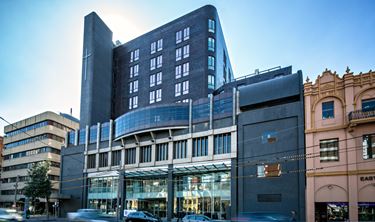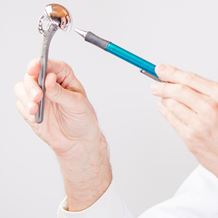Dislocated Shoulder
- Home
- Services
- Orthopaedics
- Shoulder Orthopaedics
- Common Shoulder Conditions
- Dislocated Shoulder
What is dislocated shoulder?
A dislocated shoulder is when the upper arm bone (humerus) pops out of the socket, usually as the result of sudden injury. The flexibility of the shoulder joint means that it can move in several directions. As a result, the shoulder can also dislocate in different directions – forwards (anterior), backwards (posterior) or downwards (inferior). A forwards dislocation is when the arm is twisted and forced out of the socket. This is the most common type of injury and accounts for the majority of shoulder dislocations. A backwards dislocation is much less common, and a downwards dislocation usually only occurs as the result of sudden trauma or force. Common causes of shoulder dislocation are sports injuries, falls and traffic accidents.
How is it treated?
A shoulder dislocation is incredibly painful and should receive immediate attention. The symptoms include a visibly deformed shoulder, intense pain and bruising. The joint should not be forced back into place, as this can cause further internal damage. The immediate treatment is to immobilise the shoulder using a sling or splint, using ice to relieve pain and reduce the swelling. Once a dislocation has been diagnosed, your doctor will advise whether it is a partial (subluxation) or complete dislocation, and is likely to perform a closed reduction to return the arm bone back to the socket. This will improve the pain almost immediately, and you can return home the same day with a sling to protect your shoulder joint.
How long does it last?
A shoulder dislocation is usually the result of sudden injury and should receive immediate medical attention. Once the shoulder joint has been restored, a sling should be worn immediately afterwards to immobilise the joint until the pain subsides. Further investigations may be performed to exclude further damage, such as a fracture to the ball or socket, or any injury to the rotator cuff. Depending on the severity of the dislocation, it may take 12-16 weeks to make a full recovery. Physiotherapy may be required to strengthen and stabilise the shoulder joint, and restore the range of motion. Once a shoulder dislocation has occurred, the joint is then vulnerable to subsequent dislocations – particularly in younger patients under 25 who will then have a high chance (70%) of further instability.

Shoulder replacement approaches
Find a hospital with orthopaedic services
Our Hospitals



